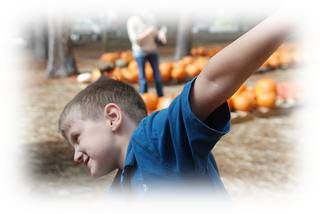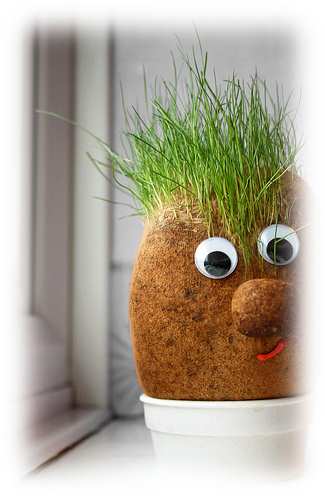An old head on young shoulders – Attitude and using your head as a prop
So far, we’ve looked at why body language is important and the three main ways we need to aware of it in terms of telling and sharing stories and books with our kids.
This next section starts off with a recommendation that many will find difficult to do. Do try it though, even if it’s just in a small way : it will make a huge difference to story time with your kids.
When telling a story to your son or daughter, the first thing you need to do is shrug off the ‘adult’ in you.
Put away your sense of decorum and your maturity and embrace your inner child!

Cliché as that may sound, the most successful part of telling a story to your child is to become over indulgent to your humorous, silly side.
No matter what genre of story you want to tell; horror, adventure, mystery or fairy tale, all require you to be willing to pack away your inhibitions and put on your playful side.
If you are unwilling to do this, then you are unlikely to be able to successfully manipulate your body language for your tale, and any actions you do attempt will come across as rigid and stiff.
Children love to see their parents turn into this crazy ridiculous person who will ‘become’ a monster, a witch or a cowboy.
It fills them with giggles to see this complete change in you.
Even teenagers love to see their parents try to seriously impress them with convincing acting during a story (though they’ll deny it all of course, mostly because they’re too busy trying to learn to hold it all in like real “adults”, but that’s somewhat off topic).

Let’s take a closer look at how you can use your head during your story
- How would you show a dog is listening to something with curiosity or interest?
- How would you show that Pinocchio is ashamed when he is caught lying?
- How would you show that you that are thinking deeply about something?
- How would you show that the student is feeling inspired?
- How would you show the nervous excitement of Lucy as she discovers that there is no back to this cupboard?
The way you move your head combined with your facial expression is an excellent way to dramatize your movements and make them more pronounced.
Subtle movements and expressions should be used deliberately, when the time is perfect for them, such as during a scary scene or when your character is up to mischief.
A superhero who tilts his head back and narrows his eyes conveys deep suspicion…
Father Christmas throws his head back with a deep bellowing laugh…
A bored, slouching school student propping up their head on one hand
A princess resting her head on her hand with fluttering eyelashes and a smile for the prince…
Captain Flint might quickly flick up his head to express a surprised interest into a discussion he overhears in the sailors’ tavern about a journey to a Treasure Island…
Your characters can even impress a range of meanings and attitudes into simple ‘yes’ and ‘no’ by using head gestures.
- A powerful king may give just a curt nod of approval (my mother is particularly good at this one), retaining distance and words from his lowly subject, who bows their head low in a gesture of submission.
- A panicking girl may give her friend a very subtle shake of the head with wide eyes to silently discourage her from telling the secret truth to the mother looming over her with arms firmly folded.
Don’t forget that your hair (if you have any – I have sadly run out) is also a useful device that you can incorporate into your body language brilliance.
- A woman’s deft flick of the hair can indicate a sense of superiority or even arrogance. Even if you don’t have any hair, kids will know what you mean and a man pretending to be a woman in a story is always guaranteed a laugh.
- A teenage girl chewing and twirling a lock of her hair immediately conveys attitude or stupidity depending on the accompanying facial expression.
- Become the mad scientist or crazy person with wildly messed up hair.
- Tossing your head and hair back with arms folded gives a great impression of stubbornness (think Princess Fiona from Shrek).
- Scratching the back of your head is a typical look of confusion or uncertainty which can be hilarious when combined with a hapless expression of bewilderment.
When telling your story, try to engage as many possible head gestures into your characters.
They don’t necessarily need to be speaking; they could be performing an action such as searching for something or simply sitting exhausted with a sagging heavy head.
Include a head gesture into the action and accompany it with an appropriate facial expression (you can learn more about these in the chapter on facial expressions) and you will imbue life and energy into your characters.
When your children see you not only telling a tale but acting it out colourfully, they will be truly ‘in’ the tale.
Storytelling homework
- Try it out. Quite simply try out the above ideas when telling stories and as you come across particular characters with certain traits or attitudes, see if you can compliment the words (and possibly pictures) on the page with some dramatisation using your body.
- Share your results.
- What have you observed?
- What have you experienced?
- How do you overcome the adult and release the inner child?
- What do your kids think about it!?
It’s really not as hard as you think and it can be a lot of fun to bring into every day fun and play with your kids.
Head back to the start of the chapter to find the next section on using your hads, arms, legs and feet as storytelling props.